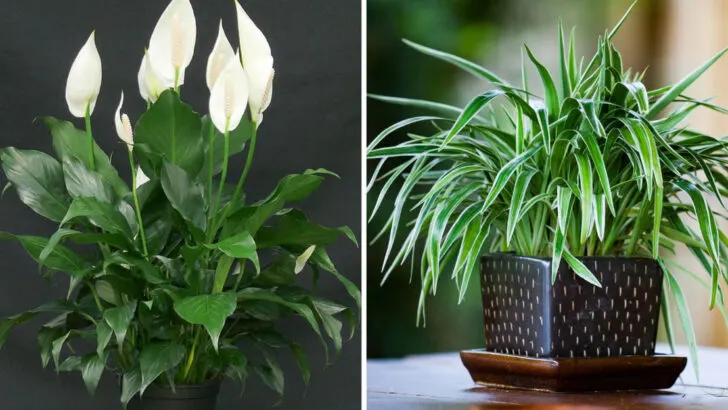Indoor air doesn’t always feel as fresh as it should, especially when windows stay shut for days and the same stale air just keeps circling. That’s where certain houseplants quietly step in. They don’t just sit there looking pretty; some actually help clean the air you’re breathing every day.
You don’t need a jungle in your living room to make a difference. Even one or two well-placed plants can help absorb pollutants, increase humidity, and just make the space feel a bit more alive. Some are low-maintenance, others need a little more care, but all of them offer something beyond decoration.
Snake Plant
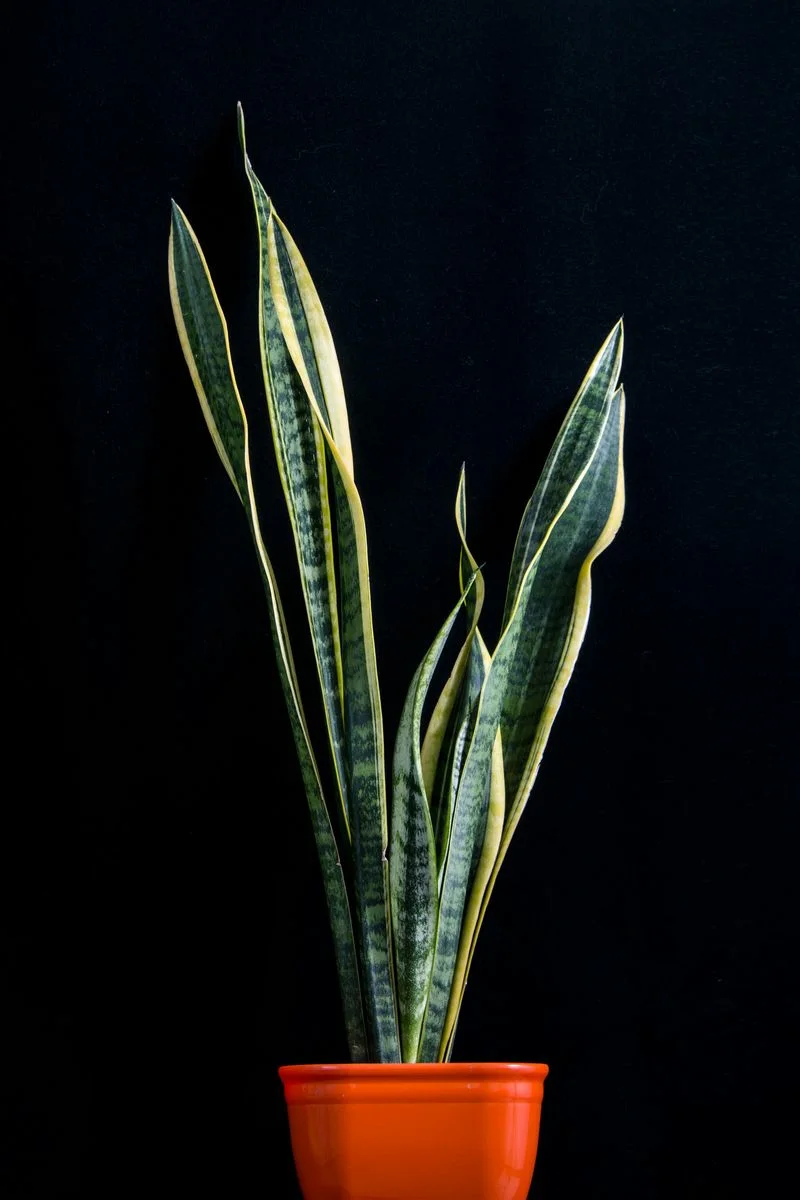
Imagine a plant that thrives on neglect. The Snake Plant, with its sword-like leaves, is as resilient as it is striking. It’s often called “Mother-in-Law’s Tongue” due to its sharp, pointed leaves.
This plant stands tall, purifying the air by filtering out toxins such as formaldehyde and benzene. Its robust nature makes it ideal for beginners or those seeking low-maintenance greenery.
A unique feature of the Snake Plant is its ability to convert CO2 into oxygen at night, unlike most plants. This makes it a fantastic addition to bedrooms, ensuring restful sleep.
Spider Plant
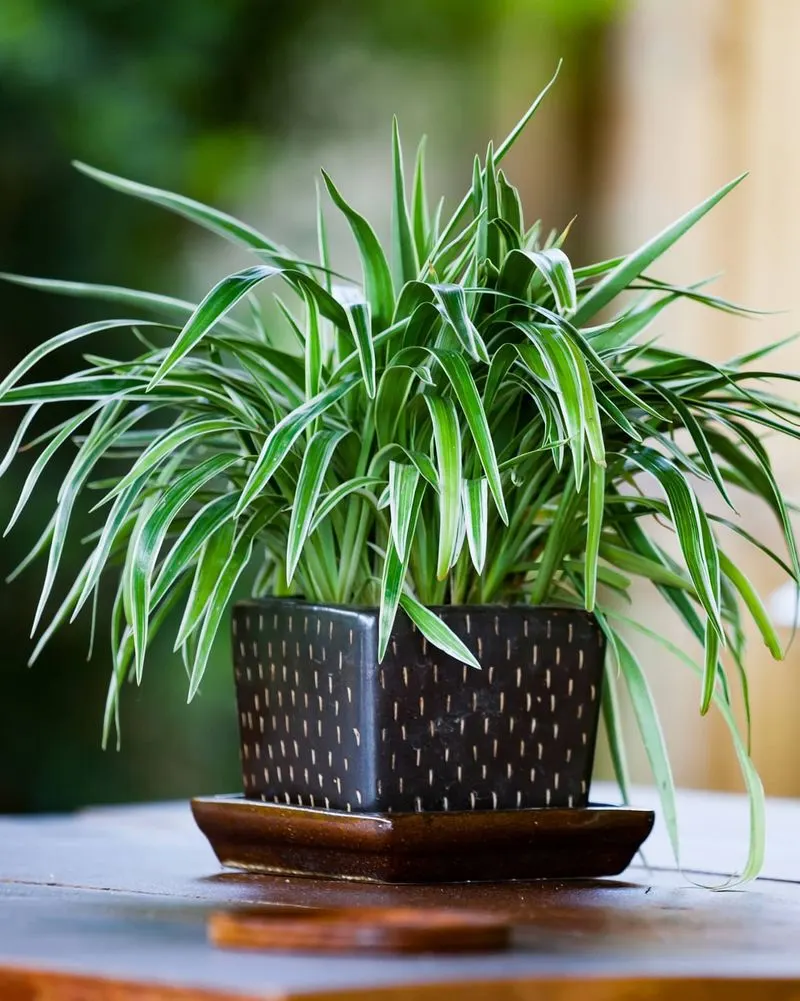
The Spider Plant, with its arching leaves and tiny plantlets, adds a whimsical touch to any room. Known for its air-cleaning prowess, it effectively removes pollutants like formaldehyde and xylene.
Its cascading foliage creates a visual delight, cascading over the edges of its container. This plant adapts well to various light conditions, thriving even in artificial light.
Notably, the Spider Plant is pet-friendly, making it a safe choice for households with curious animals. Its ease of care and charming appearance make it a timeless favorite among indoor gardeners.
Peace Lily
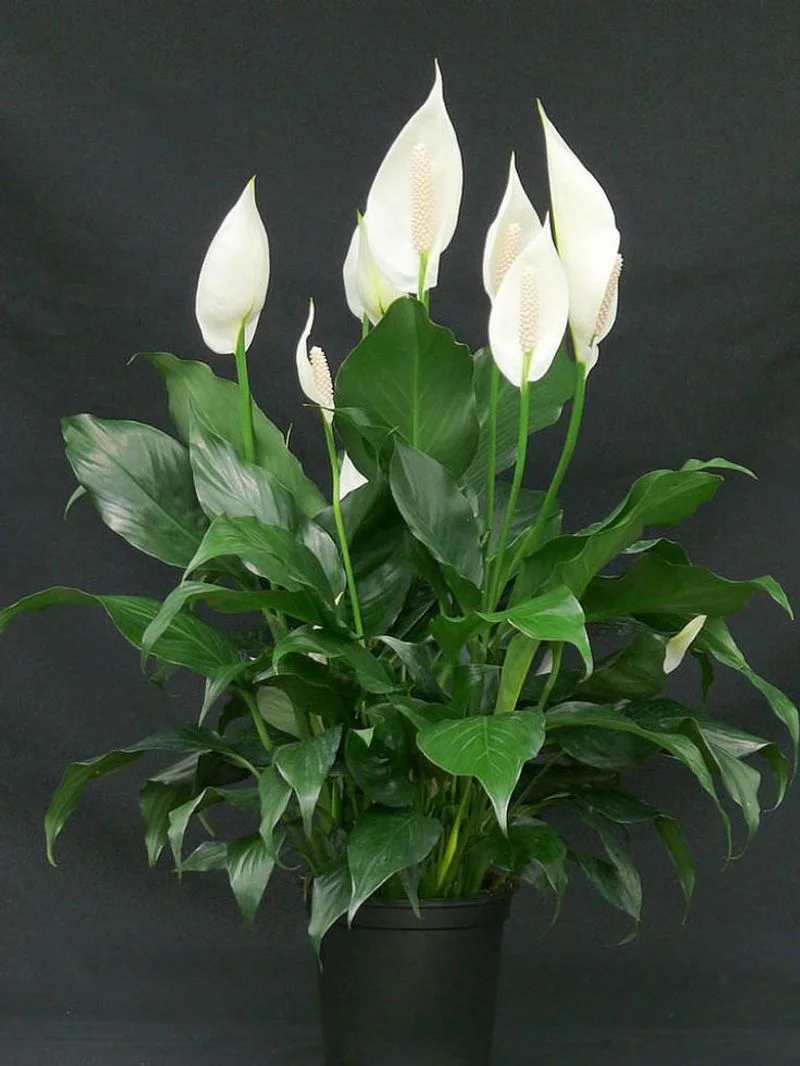
The Peace Lily, a symbol of tranquility, brings elegance to any space with its lush, dark leaves and exquisite white blooms. Beyond its beauty, it excels in filtering out harmful toxins such as ammonia and benzene.
This graceful plant thrives in low light, making it perfect for dimly lit corners. Its blooms not only add visual appeal but also work to improve air quality.
Remarkably, the Peace Lily can signal when it needs water by drooping its leaves, ensuring you never overwater. A true classic in plant care.
Boston Fern
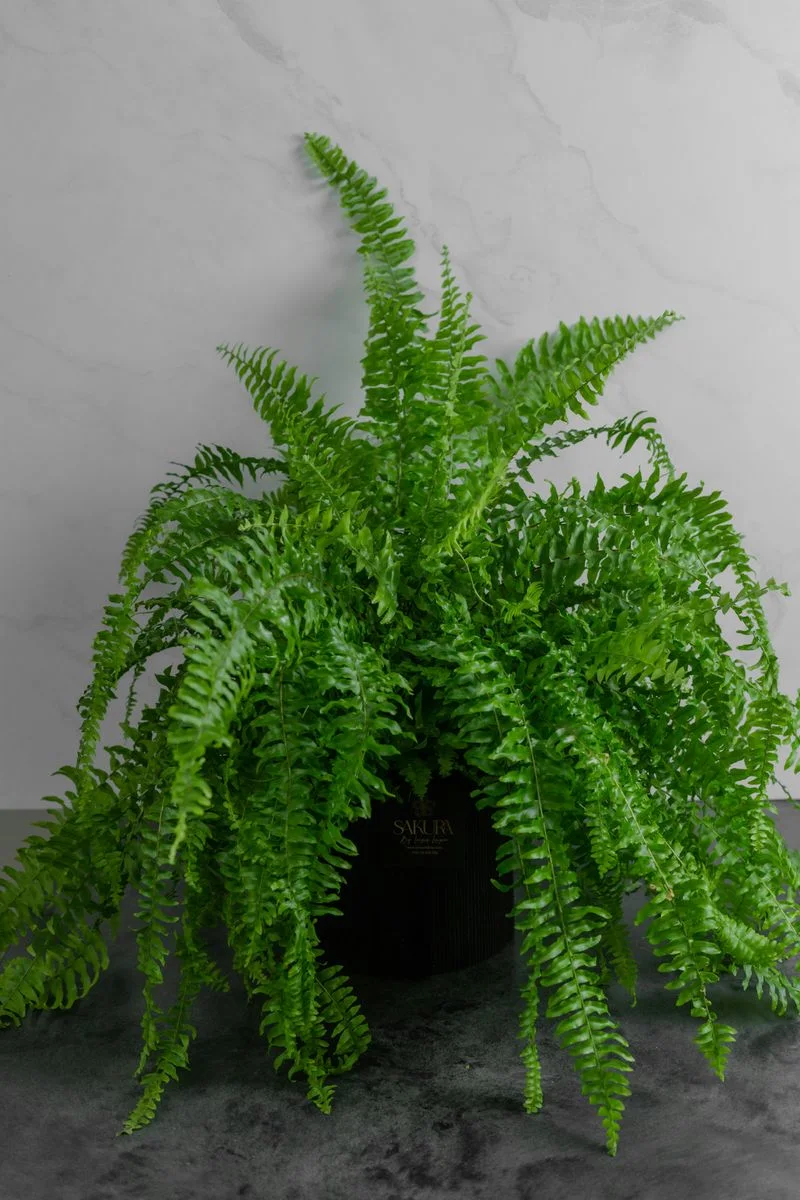
Boston Ferns, with their lush, feathery fronds, bring a touch of the tropics to your home. They’re not just decorative; they’re highly efficient at removing pollutants like formaldehyde and toluene.
These ferns thrive in humid environments, making bathrooms or kitchens ideal spots. Their need for moisture can be easily managed with regular misting.
A fun historical tidbit: Boston Ferns became popular in the Victorian era, symbolizing prosperity and elegance. Their timeless appeal continues to captivate plant enthusiasts today.
Aloe Vera
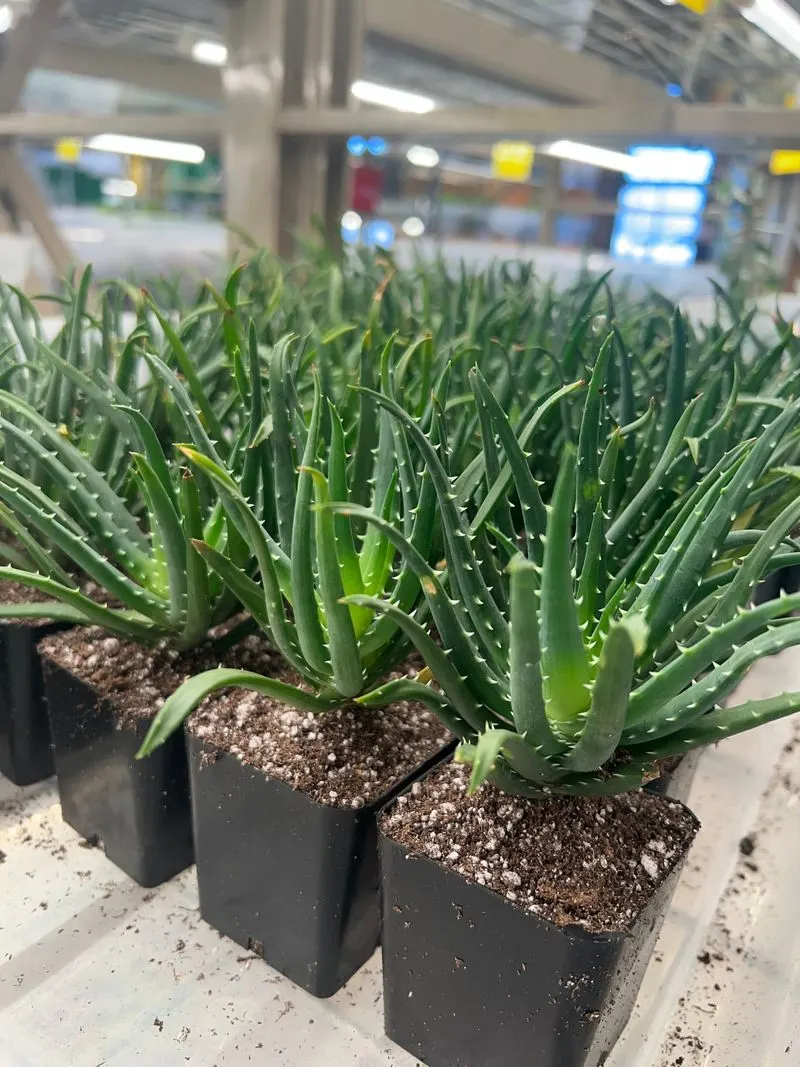
Aloe Vera, known for its healing properties, is more than a medicinal marvel. Its succulent leaves are experts at purifying the air, targeting formaldehyde and benzene.
This plant prefers bright, indirect sunlight and minimal watering, making it suitable for sunlit rooms. Its gel-filled leaves offer soothing relief for skin irritations, doubling its appeal.
Historically, Aloe Vera has been revered for centuries, from Cleopatra’s beauty rituals to modern skincare. Its dual purpose of health and air purification makes it a household staple.
English Ivy
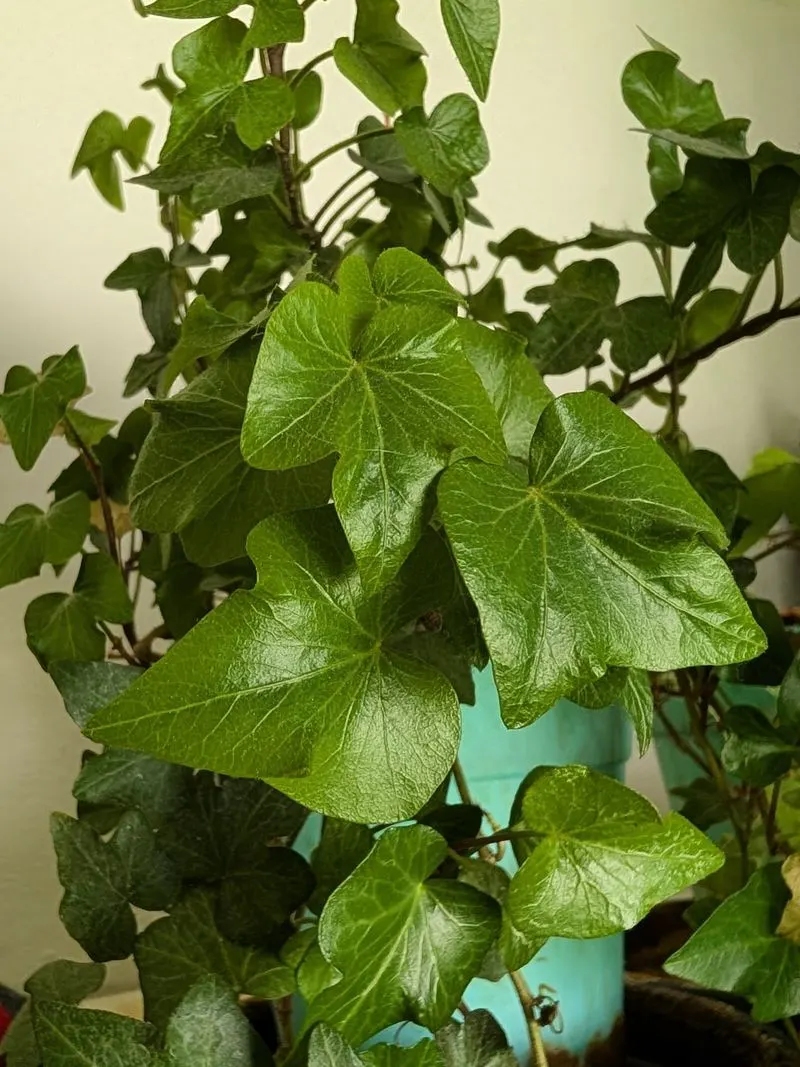
English Ivy, with its lush, trailing vines, is a versatile addition to any indoor space. It’s a master at removing airborne mold and other toxins, improving air quality significantly.
This plant thrives in bright, indirect light and can be trained to cascade or climb. Its adaptability makes it a favorite for creating green walls or hanging displays.
A quirky fact: English Ivy was often used in ancient Roman wreaths, symbolizing eternal life. Today, its persistent growth and air-purifying qualities make it a popular choice.
Chrysanthemum
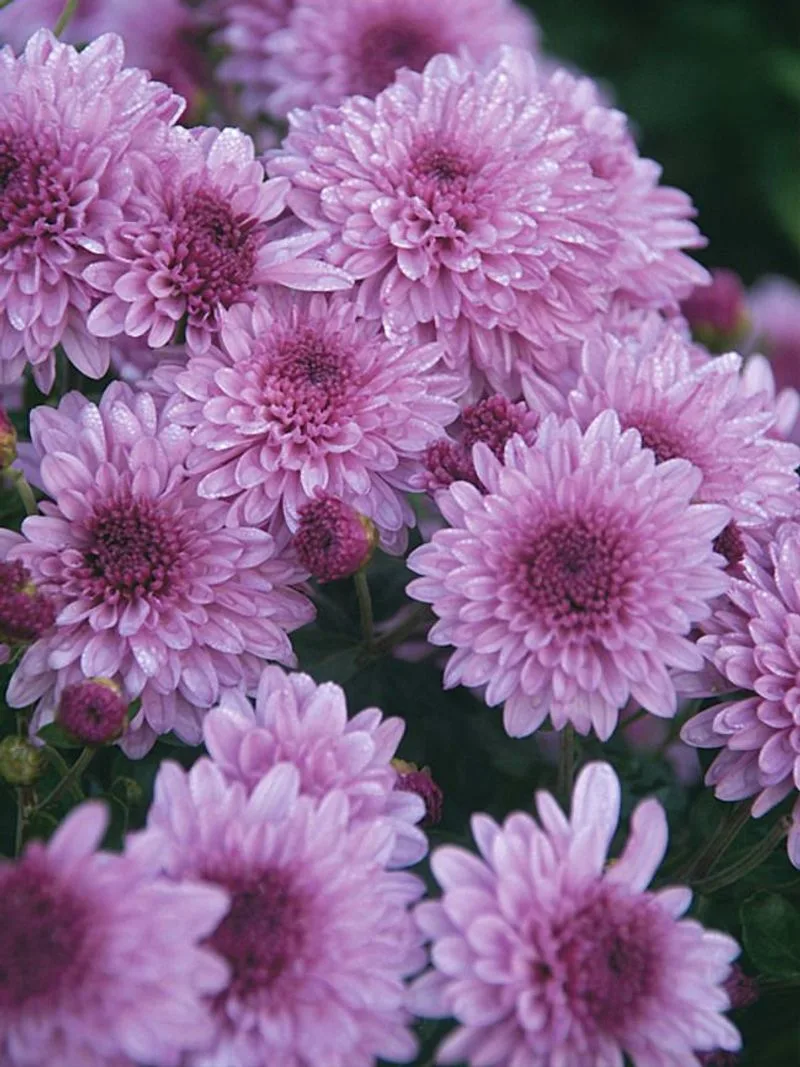
Chrysanthemums, often called mums, are more than just colorful blooms. They excel at filtering out toxins like ammonia and formaldehyde, promoting a healthier indoor environment.
These flowers thrive in bright light, rewarding care with spectacular blooms. Their vibrant petals add a splash of color to any space, enlivening dull corners.
Fun fact: In Japan, chrysanthemums are a symbol of the Emperor and the Imperial family. Their rich cultural history adds to their appeal as both decorative and functional plants.
Golden Pothos
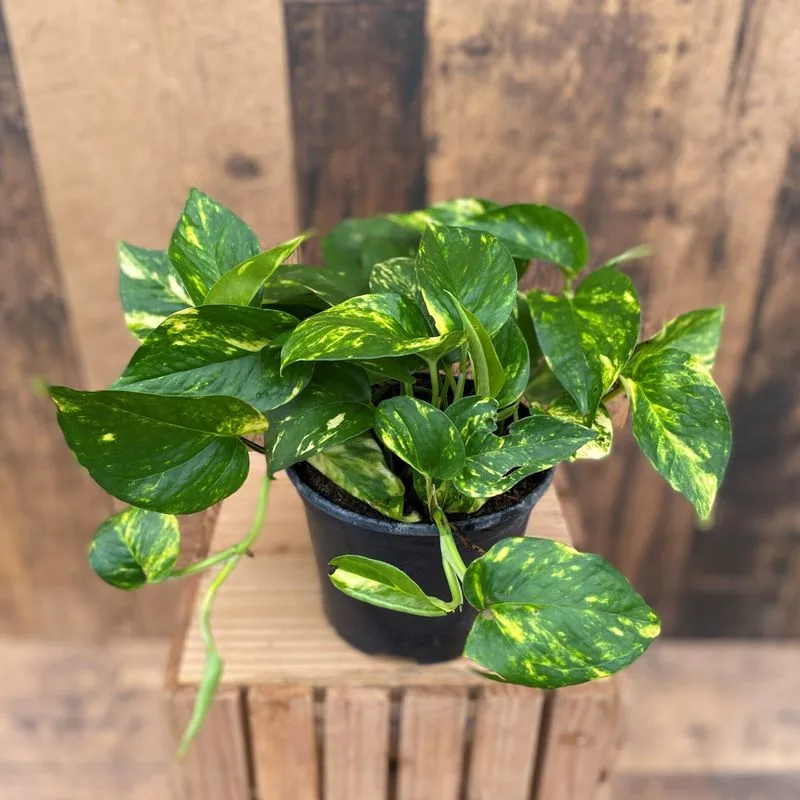
Golden Pothos, often dubbed the “Devil’s Ivy,” is beloved for its resilience and vibrant leaves. It’s an excellent air purifier, targeting pollutants like formaldehyde and xylene.
This hardy plant thrives in a variety of conditions, from low light to brighter spots, making it an adaptable choice for any home. Its trailing vines create a lush, cascading effect.
A delightful tidbit: Golden Pothos is known for its easy propagation, allowing you to share its beauty with friends and family. Its forgiving nature makes it ideal for beginners.
Chinese Evergreen
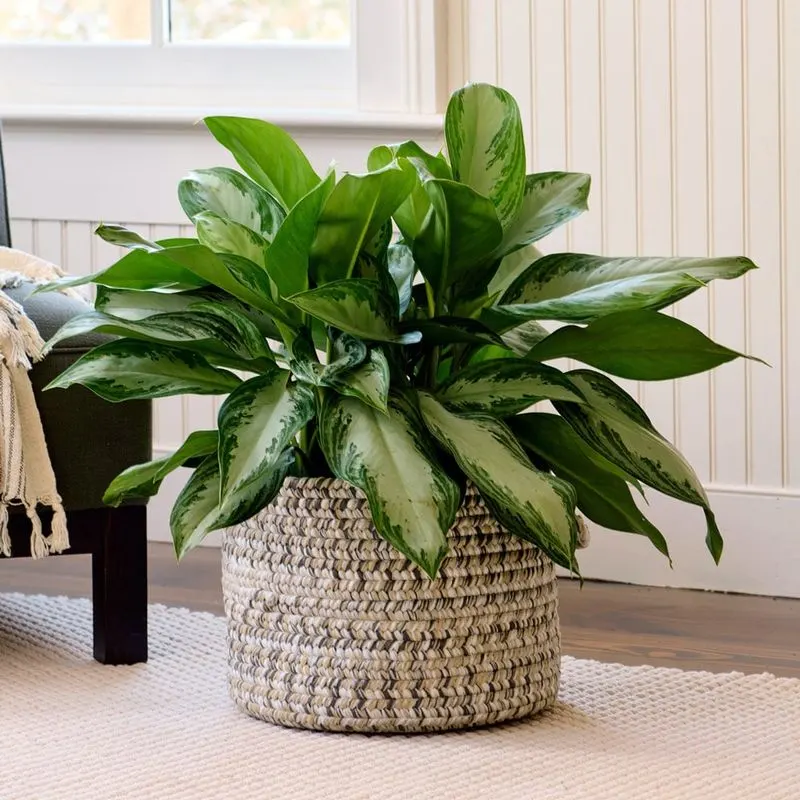
Chinese Evergreen, with its striking foliage, is a hardy plant that enhances indoor air quality by removing toxins like benzene and formaldehyde.
It thrives in low light conditions, making it perfect for shaded areas in your home. The plant’s patterns and colors vary, adding visual interest to interior spaces.
A curious note: The Chinese Evergreen is considered a lucky plant in Asia, believed to bring fortune to its owner. Its combination of beauty and practicality makes it a cherished indoor plant.
Bamboo Palm
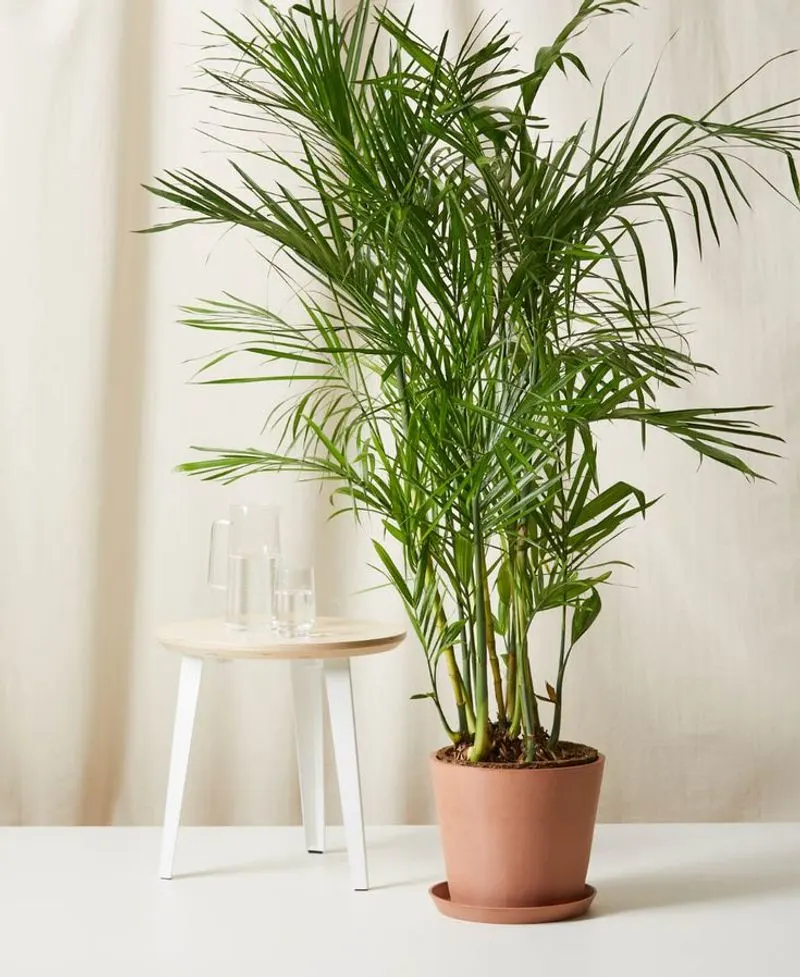
The Bamboo Palm, with its elegant fronds, brings the serenity of nature indoors. It’s a powerful air purifier, known for removing benzene, formaldehyde, and trichloroethylene.
Thriving in indirect light, this plant flourishes in both homes and offices, enhancing aesthetic appeal while improving air quality. Its graceful appearance complements modern decor.
Interestingly, the Bamboo Palm is also known as the “Reed Palm,” reflecting its reed-like stems. Its tropical allure and air-purifying properties make it a popular indoor choice.
Rubber Plant
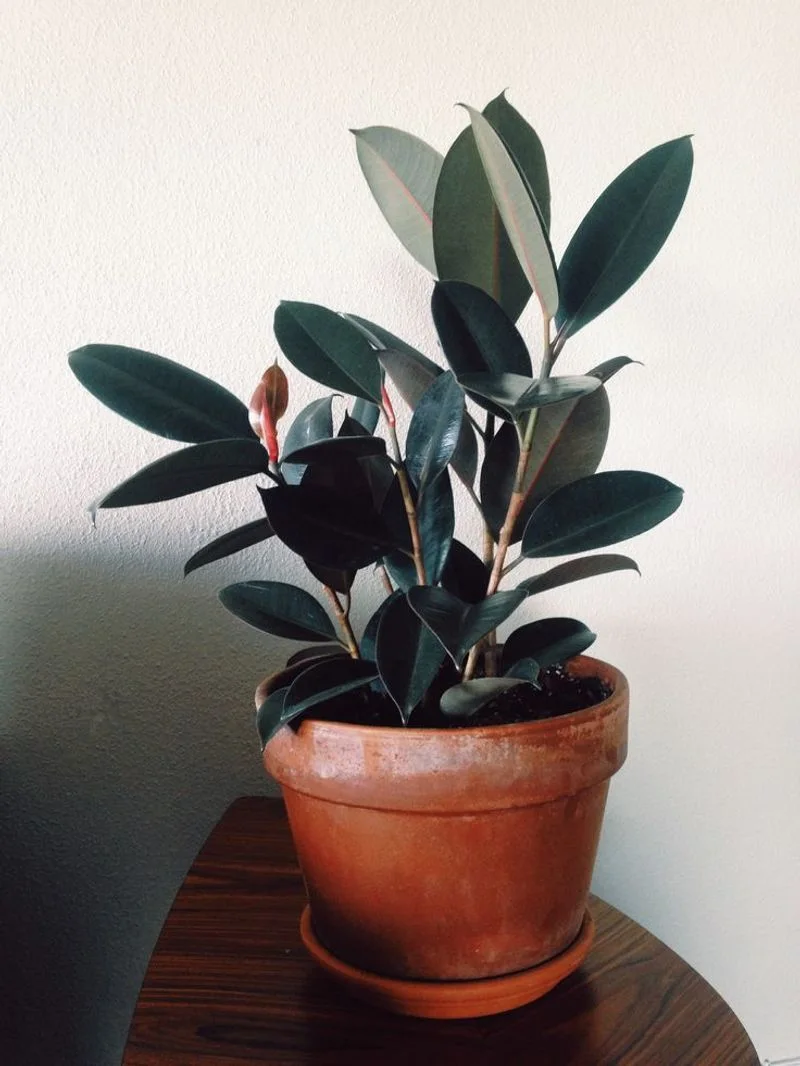
Rubber Plants, with their broad, shiny leaves, are both decorative and effective at improving air quality. They’re adept at removing toxins such as formaldehyde from the air.
These plants prefer bright, indirect light and can grow quite large, making them a bold statement piece. Their glossy foliage adds a touch of sophistication to any space.
A captivating detail: Rubber Plants belong to the fig family, sharing lineage with the edible fig tree. Their combination of aesthetics and air-cleaning abilities makes them a must-have.
Dracaena
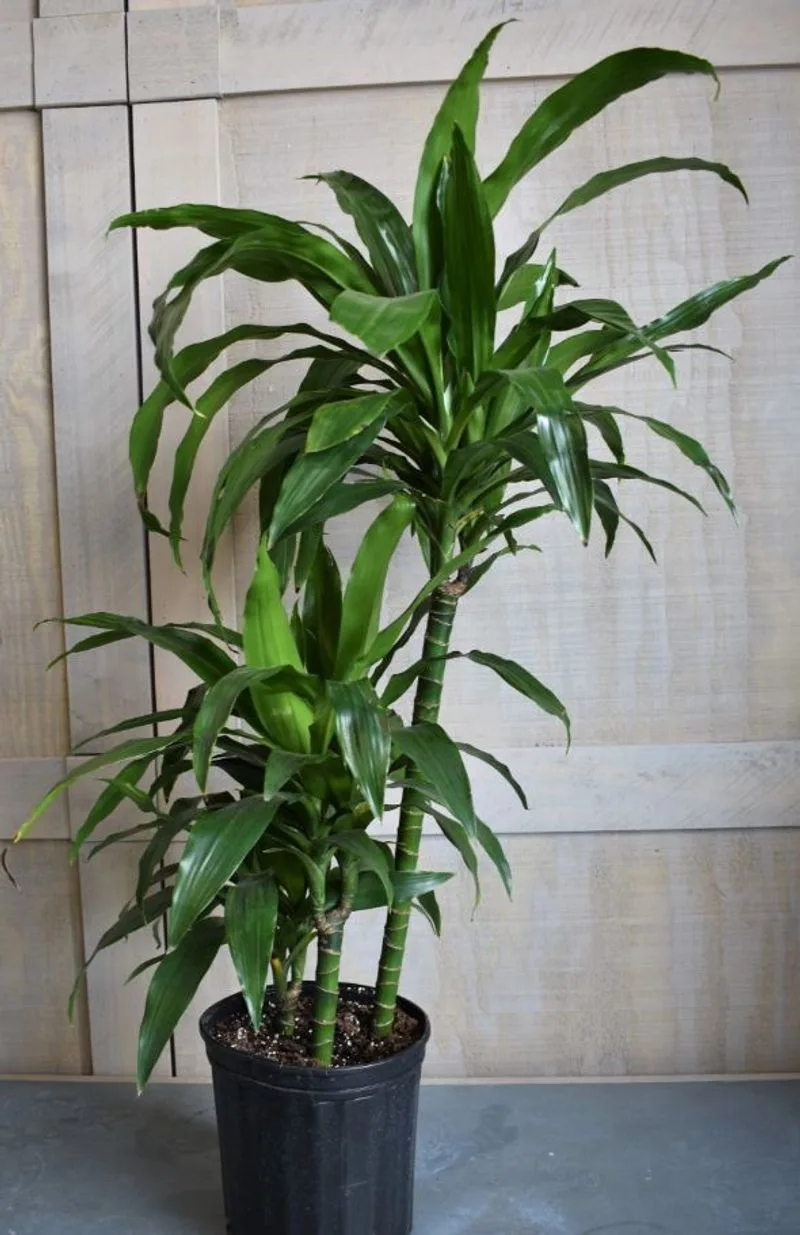
Dracaenas, with their striking foliage, offer a dramatic flair to indoor spaces. They’re excellent at filtering toxins like trichloroethylene and formaldehyde.
These plants are versatile, thriving in both low and bright light, though they prefer indirect sunlight. Their varied leaf patterns add character and interest to rooms.
Did you know? Dracaenas are sometimes called “Dragon Trees,” a nod to their mythical appearance. Their beauty and practicality make them a go-to choice for enhancing air quality and aesthetics.
Philodendron
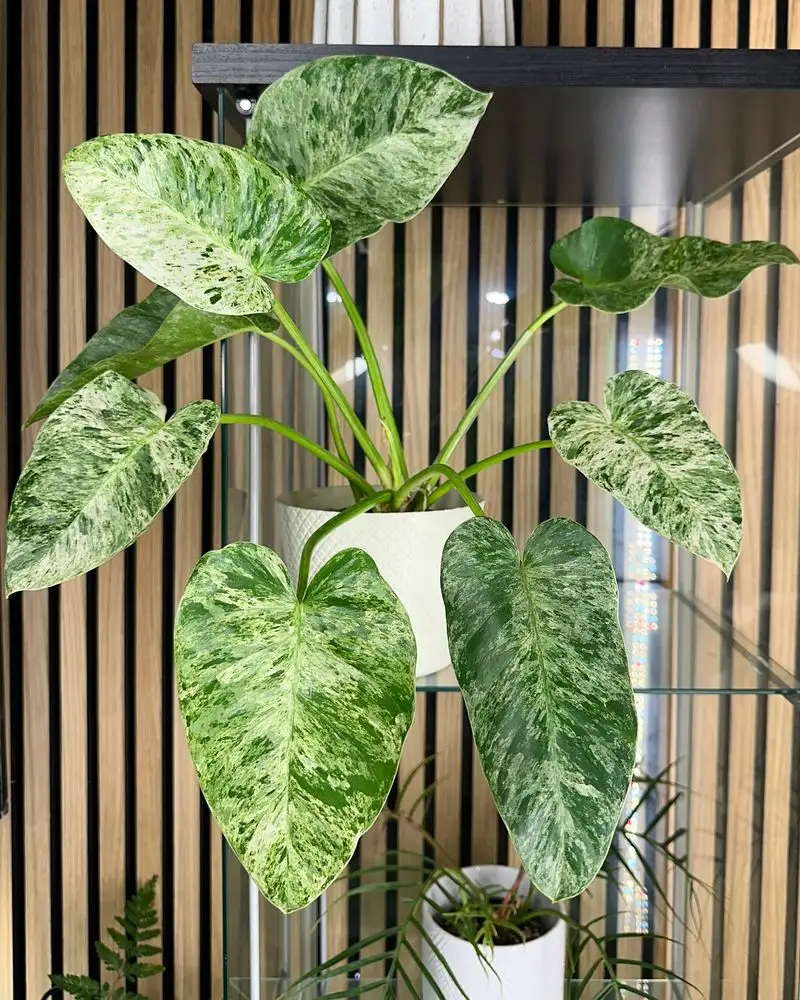
Philodendrons, with their lush leaves, add a touch of the exotic to your home. They’re known for their ability to remove formaldehyde and other toxins from the air.
These plants are easy to care for, flourishing in low to medium light conditions. Their climbing and trailing varieties offer flexibility in display options, from hanging baskets to climbing poles.
A quirky fact: The name Philodendron comes from Greek, meaning “love tree,” reflecting the plant’s affinity for climbing. Their adaptability and air-cleaning abilities make them a favorite.
Ficus Tree
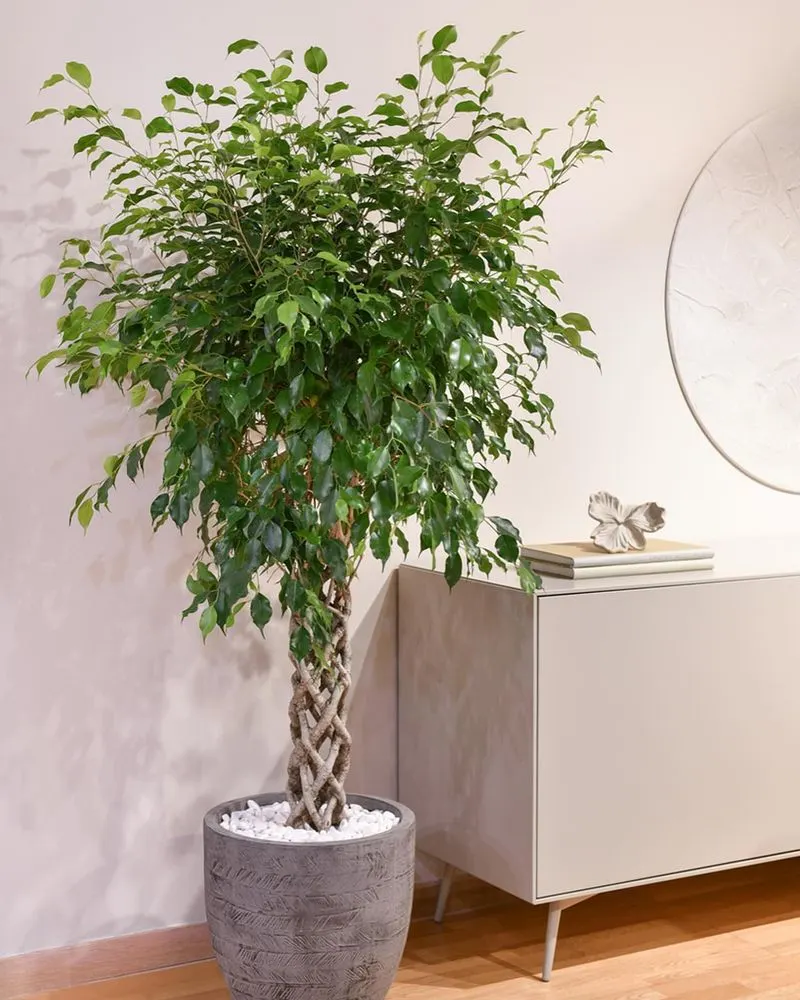
The Ficus Tree, with its elegant form and dense foliage, is a popular choice for indoor greenery. It excels in filtering out pollutants like formaldehyde and trichloroethylene.
This plant thrives in bright, indirect light and can grow into impressive sizes, becoming a focal point in any room. Its glossy leaves and sculptural trunk add a touch of sophistication.
Interestingly, Ficus Trees are part of the fig family, known for their longevity and resilience. Their classic beauty and air purification abilities make them a beloved indoor plant.
Gerbera Daisy
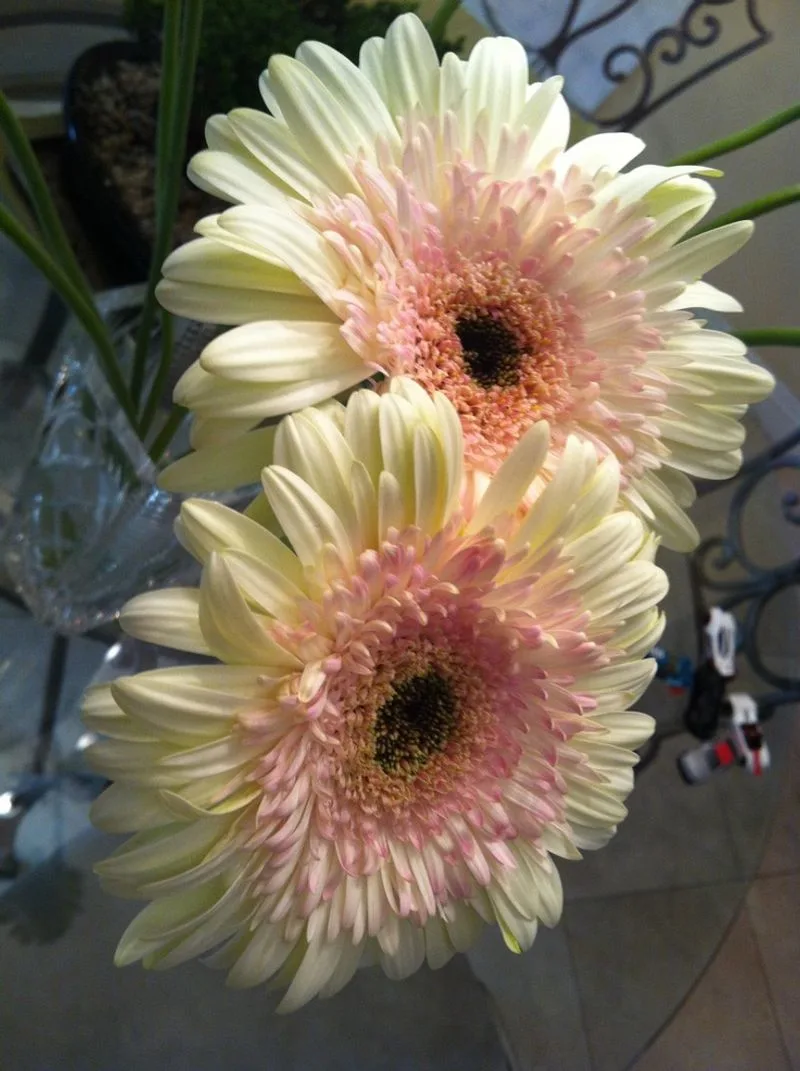
Gerbera Daisies, with their vibrant blooms, are not only eye-catching but also efficient air purifiers. They excel at removing benzene and trichloroethylene from the air.
These cheerful flowers thrive in bright light, adding a splash of color to interiors. Their bold petals make them a delightful addition to any room, lifting spirits with their presence.
Fun fact: Gerbera Daisies are popular in floral arrangements and symbolize innocence and purity. Their dual role as decorative and functional plants enhances their appeal.
Lady Palm
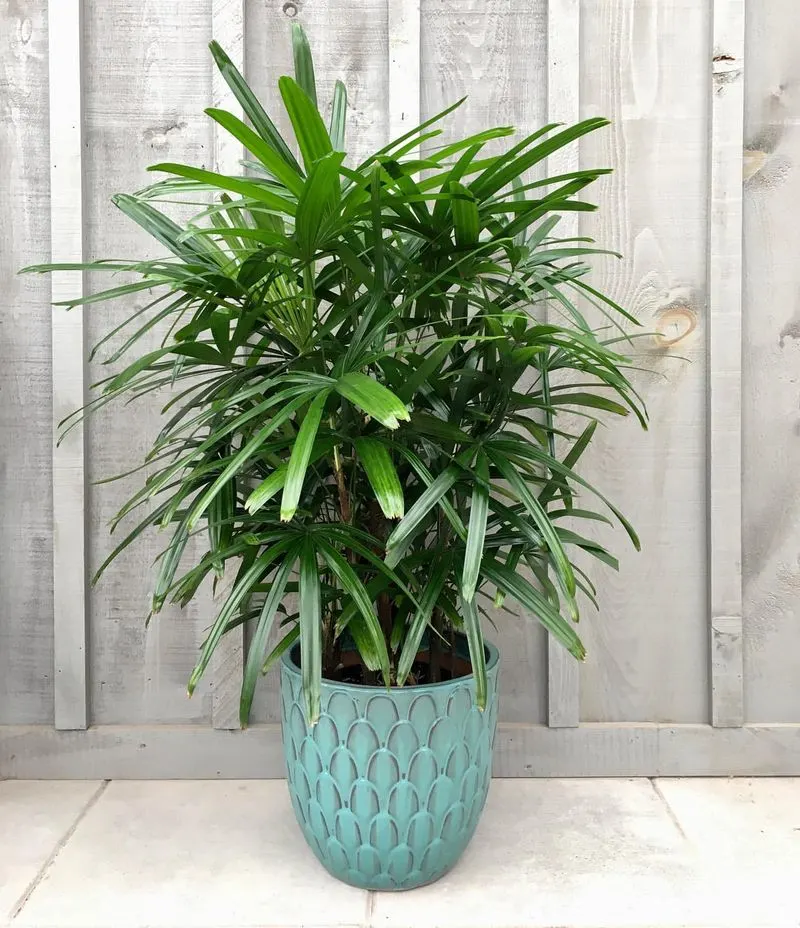
Lady Palms, with their fan-shaped leaves, bring a touch of elegance to interiors. They’re highly effective at filtering formaldehyde and ammonia from the air.
These plants prefer bright, indirect light and offer a sophisticated look with their lush, green fronds. They’re perfect for adding a tropical feel to modern spaces.
A charming detail: Lady Palms are often associated with elegance and grace, making them a popular choice for upscale interior designs. Their combination of beauty and air purification is unrivaled.
Areca Palm
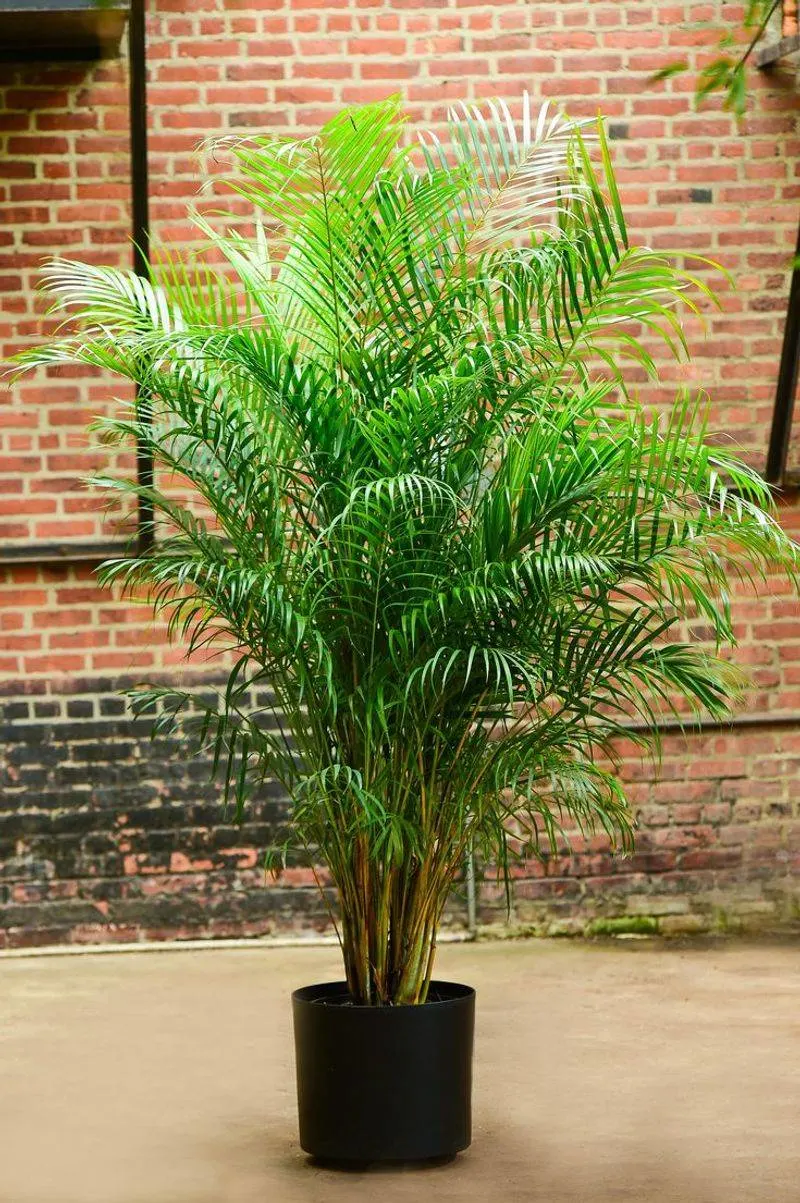
The Areca Palm, also known as the Butterfly Palm, is a tropical delight known for its air-purifying prowess. It’s adept at removing pollutants like benzene and formaldehyde.
This plant thrives in bright, indirect light and adds a lush, tropical feel to any space. Its feathery fronds create a graceful, airy appearance that enhances interior aesthetics.
Did you know? The Areca Palm is often used in interior landscaping for its beauty and non-toxic nature, making it safe for pets. Its dual benefits make it highly sought after.
Weeping Fig
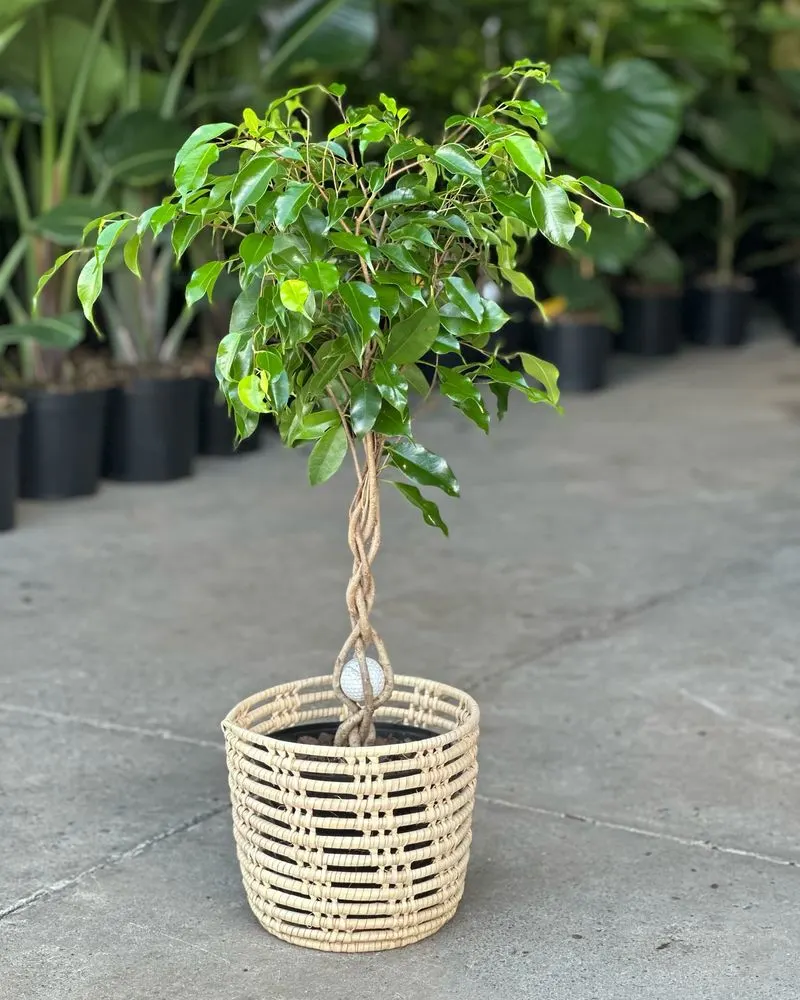
The Weeping Fig, with its graceful, drooping branches and glossy leaves, adds a touch of elegance to any room. It’s renowned for its ability to cleanse the air of common toxins.
This plant thrives in bright, indirect light and prefers consistent care, rewarding attention with lush growth. Its cascading form makes it a stunning focal point.
An intriguing tidbit: The Weeping Fig is often used in bonsai due to its striking appearance and adaptability. Its air-purifying qualities and beauty make it a cherished indoor tree.
Dumb Cane
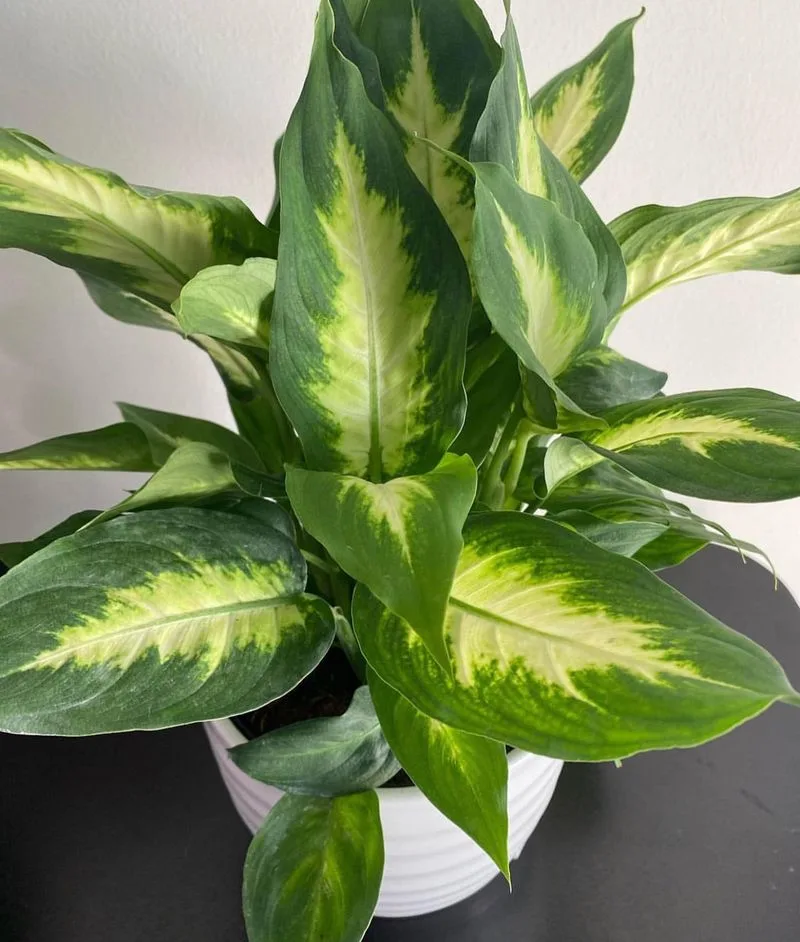
Dumb Cane, with its lush, variegated leaves, is a striking addition to indoor spaces. It’s effective at removing toxins like benzene and formaldehyde, enhancing air quality.
This plant thrives in indirect light, making it suitable for various indoor settings. Its bold foliage adds a touch of drama and color to rooms.
A curious fact: Dumb Cane gets its name from the plant’s sap, which can cause temporary speechlessness if ingested. Despite this, its beauty and purifying abilities make it a popular choice.
Corn Plant
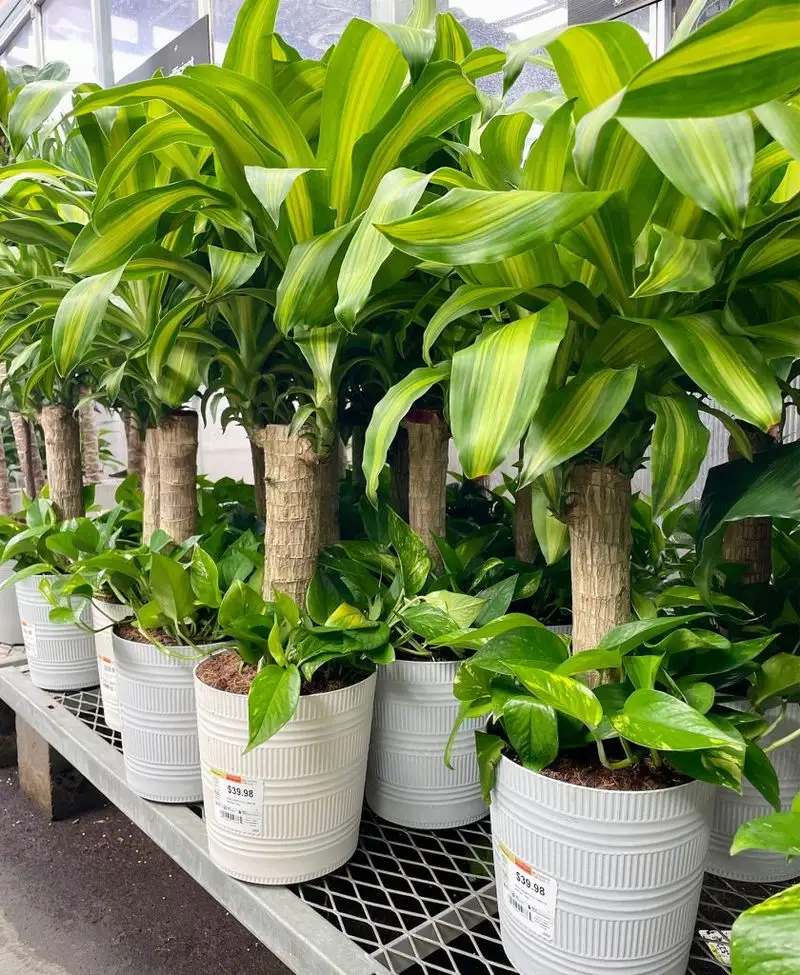
The Corn Plant, with its tall stalks and lush leaves, is both an attractive and functional indoor plant. It’s known for removing formaldehyde and other pollutants from the air.
This resilient plant thrives in low to moderate light, making it versatile for different indoor environments. Its structural form adds height and interest to spaces.
Did you know? Corn Plants are often used in Feng Shui to bring good luck and harmony. Their combination of style and air purification benefits makes them a popular indoor choice.
Parlor Palm
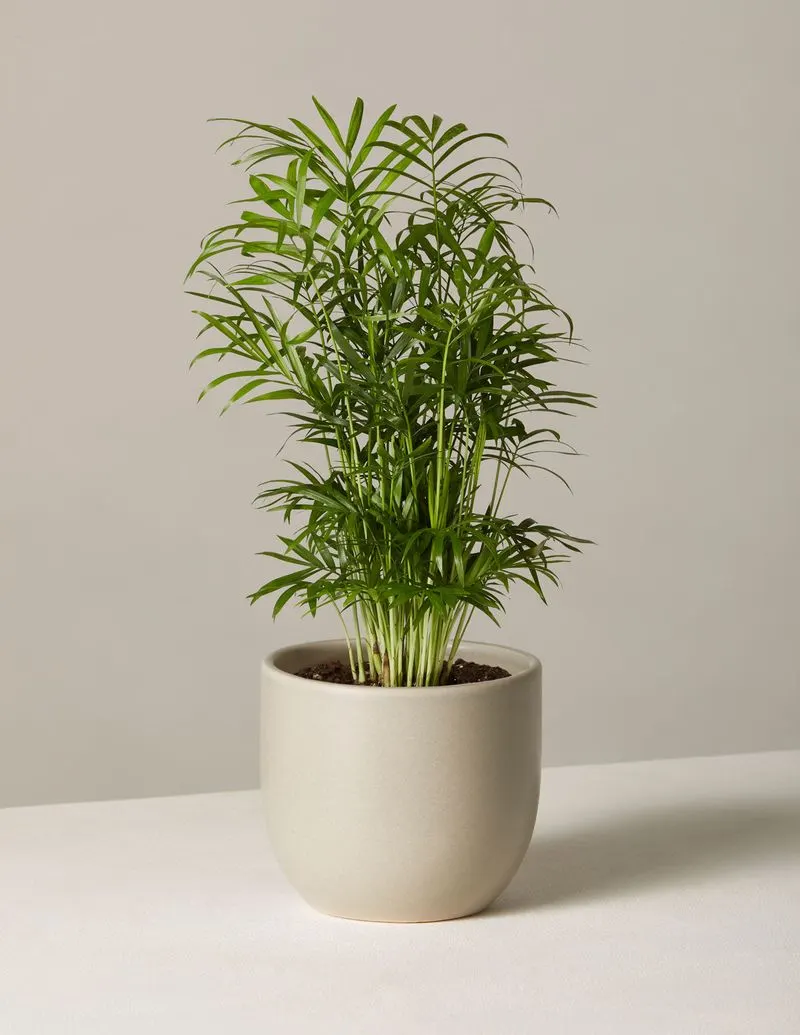
Often hailed as a symbol of elegance, the Parlor Palm (Chamaedorea elegans) graces many homes with its feathery fronds. This plant not only beautifies spaces but also excels at filtering indoor air. It thrives in low light conditions, making it suitable for any corner of your home.
With minimal water needs, Parlor Palm is a low-maintenance choice for busy individuals. Its ability to remove toxins like formaldehyde and benzene makes it a top pick for health-conscious plant enthusiasts. Whether in an apartment or an office, this palm can significantly improve air quality.
Did you know? The Victorians adored it for its resilience and grace, often showcasing it in their parlors!
Kentia Palm
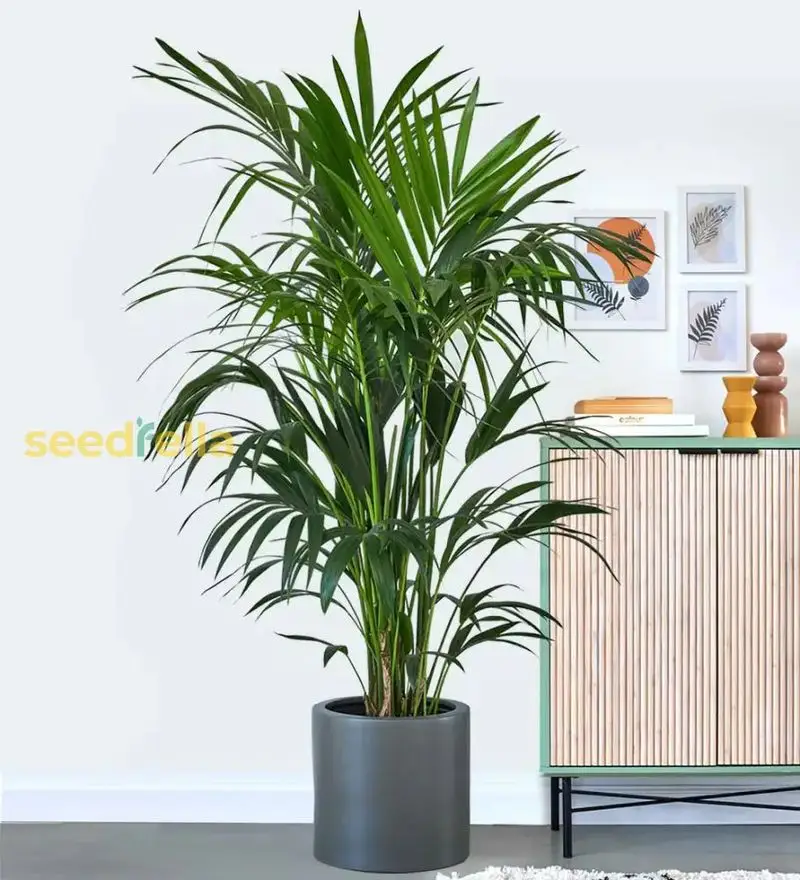
The Kentia Palm is a favorite among interior decorators for its stately appearance and air-purifying qualities. Known scientifically as Howea forsteriana, this palm is ideal for those seeking a tropical touch. Its towering leaves create a sense of grandeur in any room.
Besides its aesthetic appeal, Kentia Palm is a powerhouse at cleansing the air of pollutants such as toluene and ammonia. It thrives in indirect sunlight and requires modest care, making it perfect for busy environments.
A fun fact: The Kentia Palm was a popular choice in the palm courts of grand hotels during the early 20th century, admired for its noble stature and enduring charm!

